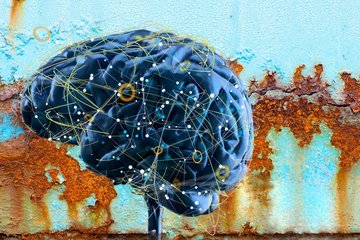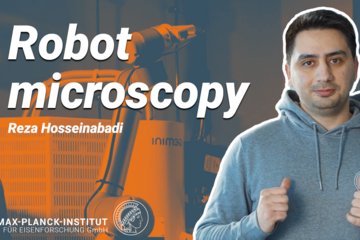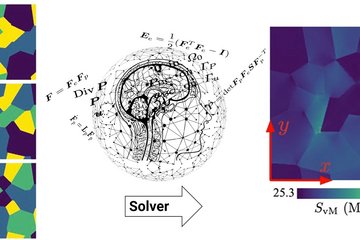All genres
1741.
Talk
Simulation of multiple deformable objects in flow via LBM and FEM. 19th Discrete Simulation of Fluid Dynamics (DSDF), Rome, Italy (2010)
1742.
Talk
Atom Probe Tomography characterization of heavily cold drawn pearlitic steel wire. 52nd International Field Emission Symposium (IFES), Sydney, Australia (2010)
1743.
Talk
Nano-particles and filaments in steels: From understanding to materials design. 52nd International Field Emission Symposium IFES 2010, Sydney, Australia (2010)
1744.
Talk
Recrystallization during annealing of a cold rolled lean duplex stainless steel. Recrystallization & Grain Growth 4 RX&GG, Sheffield, UK (2010)
1745.
Talk
Atomic-scale mechanisms in mechanical alloying - Towards the limits of strength in ductile nano-structured bulk materials. International Symposium on Metastable, Amorphous and Nanostructured Materials (ISMANAM) 2010, ETH Zürich, Switzerland (2010)
1746.
Talk
Recrystallization and grain growth in ultra fine grained materials produced by high pressure torsion. Recrystallization & Grain Growth 4 RX&GG, Sheffield, UK (2010)
1747.
Talk
Microstructure evolution during recrystallization of dual-phase steels. Recrystallization & Grain Growth 4, Sheffield, UK (2010)
1748.
Talk
Influence of grain boundary mobility on microstructure evolution during recrystallization. Recrystallization & Grain Growth 4, Sheffield, UK (2010)
1749.
Talk
Computer simulations of dense red blood cell suspensions. TU Eindhoven,Department of Applied Physics, Eindhoven, The Netherlands (2010)
1750.
Talk
3D EBSD: Tomographic orientation microscopy in a FIB SEM. E-MRS 2010 Spring Meeting, Strasbourg, France (2010)
1751.
Talk
Microstructural analysis of the deformation laminates in single crystals: Experiments and theory. European Congress on Computational Mechanics ECCM 2010, Paris, France (2010)
1752.
Talk
A non-local constitutitve hardening model based on polar dislocation densities. IV European Conf. Comp. Mech. ECCM 2010, Paris, France (2010)
1753.
Talk
Quantifying the plastic anisotropy of gamma-TiAl by axisymmetric indentation. International TiAl Workshop, Birmingham, UK (2010)
1754.
Talk
Simulation of a dense suspension of red blood cells. TU Braunschweig, Institut für rechnergestützte Modellierung im Bauingenieurwesen, Braunschweig, Germany (2010)
1755.
Talk
Atomic-scale distribution of impurities in CuInSe2-based thin-film solar cells. 15th GLADD meeting 2010, Delft, The Netherlands (2010)
1756.
Talk
Ab initio based study of multi-scale elastic properties of hierarchical biocomposites. Seminar talk at Masaryk University, Brno, Czech Republic (2010)
1757.
Talk
Ab initio studies of nano-precipitation and growth in ferritic steels. DPG Frühjahrstagung 2010, Regensburg, Germany (2010)
1758.
Talk
Homogenisierung von Mehrphasenwerkstoffen zur Simulation von Umformprozessen. 13. Workshop Simulation in der Umformtechnik, Modellierung von Verfestigungsmechanismen in der Blechumformung, Institut für Umformtechnik, Universität Stuttgart, Germany (2010)
1759.
Talk
Fundamental Materials-Design Limits in Ultra Light-Weight Mg-Li Alloys Determined from Quantum-Mechanical Calculations. 139th Annual Meeting of the Minerals, Metals and Materials Society (TMS), Seattle, WA, USA (2010)
1760.
Talk
Arthropod Cuticle: A Biological Multifunctional Composite Used As Template for Multidisciplinary Nano-To-Macro-Scale Hierarchical Modeling. 139th Annual Meeting of the Minerals, Metals and Materials Society (TMS), Seattle, WA, USA (2010)











